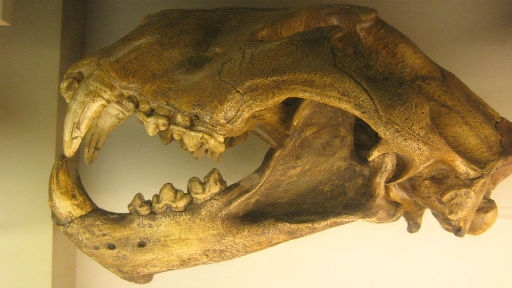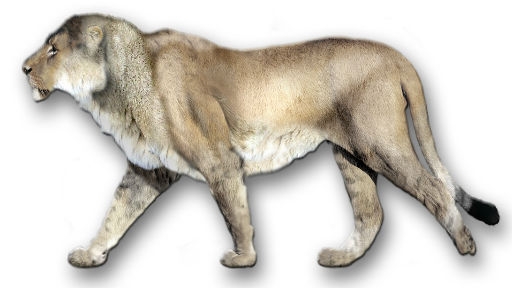
It’s easy to picture a lion in its natural habitat, stalking antelope on the African savannah. But during the Pleistocene epoch (340,000 to 11,000 years ago), lions called a much more familiar landscape home.
The grassy plains, cornfields and mountainous regions of the USA were once the terrain of the American lion, a long-extinct predator that was closely related to – and much larger than – today’s big cats. It was one of the biggest cats to ever live, outpacing even the giant Siberian tigers of Asia and the famed sabertooth cat.
Thanks to an abundant number of fossils uncovered in the La Brea Tar Pits in Los Angeles, scientists have been able to reconstruct Panthera atrox; better known as the American lion. They’ve been able to study more than 100 specimens from that location alone.

The animals were between 5 and 8 feet long from head to tail, and stood nearly four feet tall at the shoulder. Scientists estimate that males weighed, on average, 564 pounds, though the largest specimen analyzed likely clocked in closer to 774 pounds.
The carnivores were so big, no other animal on the plains stood a chance. They were large enough to take down prey as large as a bison, which is today the largest terrestrial animal in North America.

The first American lion fossil was discovered in Mississippi in 1853 by naturalist Joseph Leidy. He found a large lower jaw bone, and named the species Felix atrox, or “cruel cat.” It was later renamed Panthera, which scientists now believe may be a more accurate moniker.
Though paleontologists initially believed the American lion was most closely related to modern lions and tigers, further study and comparisons suggest the cat may have been closer to our modern pantherine cat species; not a lion at all, but a very, very big jaguar.

Fossils have also been found in Texas, Idaho, Nevada, Nebraska, Wyoming and Northern Florida. It’s assumed the lions roamed from Alaska to Peru, and even existed outside the Americas. Cro-Magnon people in France painted potraits of lions on cave walls around 30,000 years ago, just a few thousand years before the last American lions – along with many of the world’s other large mammals – became extinct.




